Album: Colorful Dinosaur Art
"Moonlight hunt": Microraptor
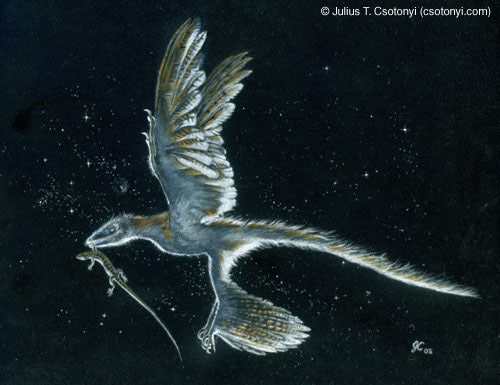
This crow-sized dinosaur, found in China in the lower Cretaceous, may have been capable of guided flight, with long feathers on its two sets of wings (both fore and hind limbs) and tail.
Gorgosaurus libratus
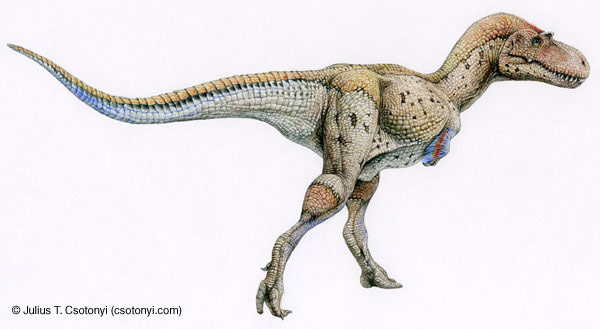
Gorgosaurus libratus, found around Alberta, Canada, is pictured here with speculative arm feathers. An earlier tyrannosaur, Dilong, is known to have possessed an outer covering of hair-like feathers along its back and tail, and such traits may have been conserved in later members of the group as well.
Dromiceiomimus brevitertius
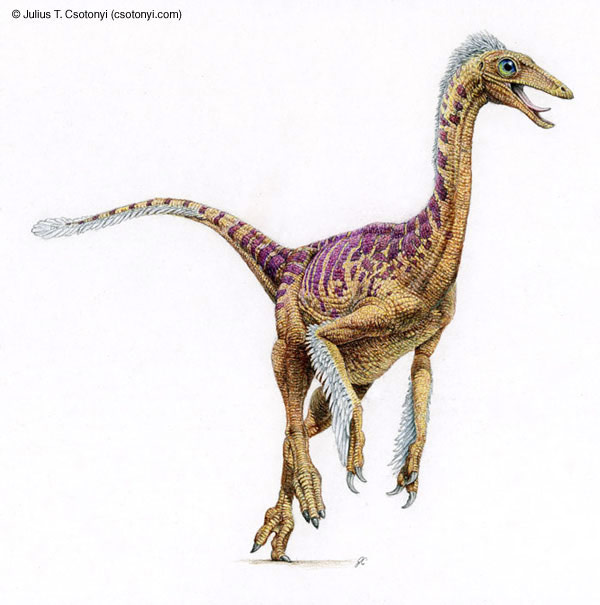
With its long, clawed forelimbs, Dromiceiomimus could have scooped up insects, eggs and small animals for its dinner. The omnivorous dinosaur may also have eaten seeds.
Spinosaurus aegyptiacus
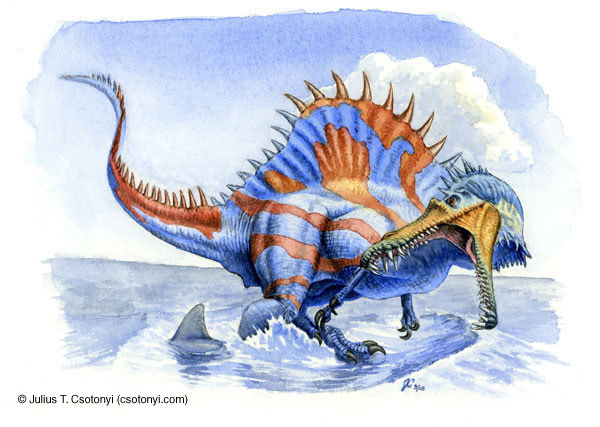
Spinosaurus aegyptiacus, found in Egypt and Morocco during the Upper Cretaceous, had a sail-like structure of fleshy spines extending from its vertebrae. The original Spinosaurus fossil specimens were destroyed during Allied bombing of Germany in 1944.
Carcharodontosaurus saharicus

Found in North Africa during the Upper Cretaceous, Carcharodontosaurus, grew nearly as long as T. rex. Its name, which means “jagged-toothed lizard,” comes from its long, serrated teeth.
Shuvuuia deserti

The turkey-sized Shuvuuia, or “desert bird,” lived in the Gobi Desert of Mongolia during the Cretaceous. It had strong forelimbs with enlarged thumbs that it may have used to probe the nests of insects, like termites.
Ornithocheirus giganteus
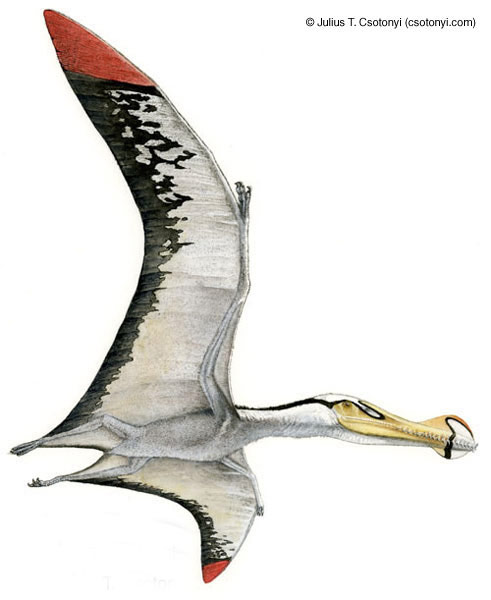
One of the largest known ptersosaurs, Ornithocheirus had a 40-foot wingspan but weighed only as much as a grown man because it had hollow bones filled with air sacs. It also had a bony crest adorning its snout.
Get the world’s most fascinating discoveries delivered straight to your inbox.
Ichthyosaurus communis
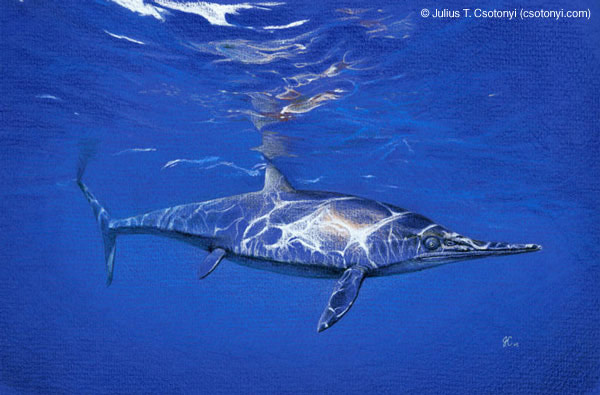
Ichthyosaurus was an ancient marine reptile that swam through the Jurassic seas. A treasure trove of fossils of this dolphin-shaped creature were found over 100 years ago in Holzmaden, Germany.
Ctenacanthus
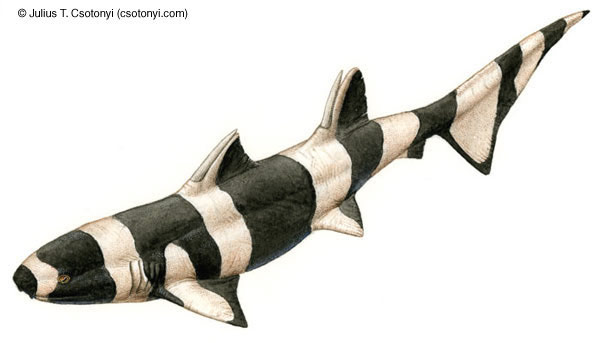
Found in Scotland during the Carboniferous period, Ctenacanthus was an early shark-like fish that had rigid spines in front of each of its two dorsal fins.


